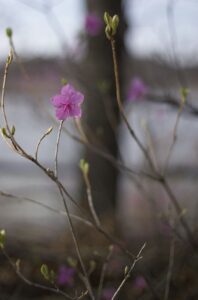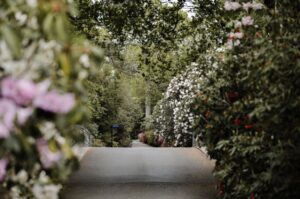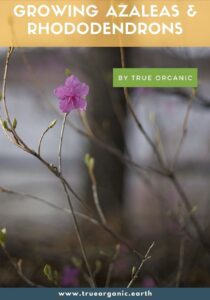November 4, 2021
Growing Azaleas & Rhododendrons
Growing Azaleas & Rhododendrons
If you’ve ever gazed upon a rhododendron’s many bright, clustered blooms, you can tell why it has earned the deserving title of “Royalty of the Garden.”
Rhododendrons and azaleas both belong to the Rhododendron genus, and their gorgeous flowers, cold-resistant leaves, and ease of care makes them incredibly popular for landscaping.
If you’re newer to caring for shrubs, these flowery friends are the perfect addition to your landscaping.
There are over a thousand varieties of rhododendrons! Evergreen and deciduous, low to the ground and taller tree-like varieties, with flowers of pink or white or even yellow. That means there’s definitely a perfect choice for your garden or landscaping. In fact, These flowering shrubs can be found in almost every part of North America, although they are native to Asia.
Soil & Fertilizing
Whilst one of the reasons azaleas and rhododendrons are so universally loved is how low-maintenance they are, they do have a few special characteristics that need attention, and for that reason, they do better and are easier to care for when planted in groups.
Azaleas and rhododendrons have shallow root systems, so a well-draining, moist soil is essential. They thrive in a lower pH soil, between 4.5 and 5.5, so a plant food with sulfur is very important, too. Most rhododendrons only need to be fertilized moderately, with a supplement that isn’t too harsh—which is why we developed a True Organic plant food blend just for them.
As buds begin to grow in early Spring, use the recommended application, being careful to avoid the plant food settling against the stem. We recommend a Fall feeding too, to prepare your shrub with plenty of nutrients stored in its bark come Spring.
True Organic™ Azalea, Camellia & Rhododendron Food contains 5% sulfur to help lower soil pH and improve availability of micronutrients. We also use other natural, organic farm-grade ingredients like ethically sourced poultry manure and seabird guano (a great source of phosphorus and slow release nitrogen), and shrimp and crab shell meal for calcium and nitrogen.
Like most shrubs, rhododendrons benefit from a decent mulching in the Spring to protect their shallow roots and help the soil retain moisture in this important season.
Choosing Your Varietal

- When the plant flowers.
- What Climate Zone is right for them.
These two major differences will help you narrow down your choices. Of course, your local garden store won’t likely sell plants that can’t grow in your Climate Zone! Check out your Climate Zone on the USDA website if you’re not sure what it is.
Early varieties blossom in early Spring; later bloomers will flower in July and later. A few varieties even flower in Fall. Many types keep their large, green leaves into Winter, making them very popular for colder climates.
Where to Plant
With so many different varieties of rhododendron and azalea, be sure to study the specific needs of your plant of choice.
While they can grow in so many diverse environments, they like it best in places with plenty of rain and moist summers. The amount of sun a rhododendron needs will depend on your climate zone.
- In cooler and mild climates, choose a location in full or mostly full sun, where they’ll get at least 6 hours of full sun.
- In warmer climates, plant in a site that receives afternoon shade, especially in hot areas.
- In tropical zones, azaleas will bloom in full shade!
Remember that they have shallow root systems, so choose a location that either already has a moist, humus-rich soil to plant in, or a spot where you have enough room to create that environment.
 Pruning
Pruning
These easy-care landscaping gems don’t need much pruning. Deadheading is always a good idea for Spring-flowering plants if you want to promote vegetative growth over seed production.
If you need to reduce height or really want to encourage more flowers, here are some pruning tips for your azaleas and rhododendrons:
- Prune after flowering in the Spring.
- Remove dead or diseased branches at any time of year, of course!
- Always use a clean, sharp tool to take off spent flower stalks.
- Remove dead flowers from rhododendrons carefully, making sure to not disturb next year’s buds, which are growing just under the old ones.
One of the delights of tending to rhododendrons and azaleas is enjoying their luscious blooms inside! When flowers are blooming, carefully trim your favorite blooms from mature stems to bring the beauty of these beloved flowering shrubs into your home.
Show us your True Organic Plants
#GrowWithTrue
www.trueorganic.earth


 Pruning
Pruning
